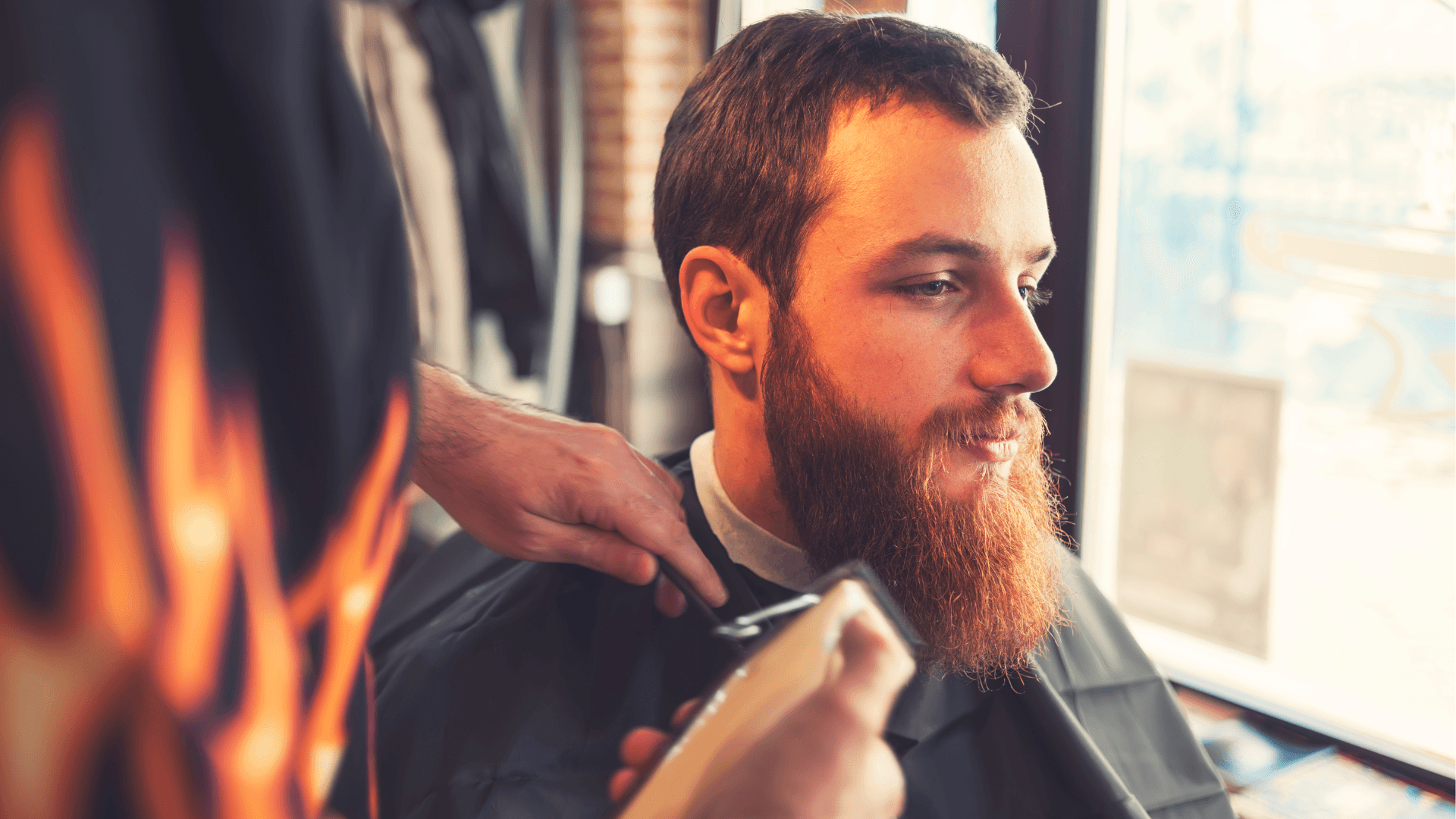A well-trimmed beard makes a significant difference in a man’s overall appearance, projecting an image of confidence and style. However, keeping facial hair neat and presentable can be a challenge, especially for those juggling busy schedules or unfamiliar with the best grooming techniques. Fortunately, these 11 beard trim hacks are designed to help every bearded man maintain a sharp, stylish look with minimal effort.
1. Always Start with a Clean, Dry Beard
Trimming facial hair without cleaning it first can lead to disastrous results, as dirt, oil, and moisture can interfere with the trimming process. Begin by thoroughly washing the beard using a gentle beard shampoo to remove impurities and excess oils while keeping the skin hydrated.
Rinse with lukewarm water and pat it dry using a microfiber towel to prevent frizz or split ends. Allow the beard to air dry completely, as trimming a wet beard often leads to uneven cuts. Damp hair tends to appear longer than it actually is, meaning trims done on wet hair might look shorter once the beard dries. By starting with a clean, dry beard, you’ll ensure precision and achieve a well-groomed, symmetrical look.
2. Visit a Barbershop for Professional Shaping
For those unfamiliar with beard shaping or struggling to find the right style, visiting a barbershop in New York may be the perfect solution. Professional barbers have the expertise to assess your face shape, beard texture, and overall aesthetic to create a tailored look that complements your features. A skilled barber can also offer advice on maintaining your beard between visits, such as identifying the right tools and products for your specific needs.
Additionally, professional trimming ensures that the lines around the cheeks, jawline, and neckline are crisp and balanced, an outcome that is often difficult to achieve at home. It’s worth scheduling regular appointments to keep your beard looking polished and stylish while learning valuable grooming techniques from the experts.
3. Use the Right Tools
Maintaining a well-groomed beard starts with having the right tools at your disposal. A high-quality trimmer is essential for achieving clean, precise lines and evenly trimmed hair. Unlike cheap alternatives, a good trimmer is designed to glide smoothly through your beard without causing irritation or pulling at the hairs, which can lead to discomfort or an uneven appearance. Look for a trimmer with adjustable length settings, as this allows you to tailor the device to your specific beard style and thickness. For areas requiring more precision, such as defining edges or trimming small sections, a pair of sharp, professional-grade scissors is indispensable. These scissors offer greater control and allow you to snip away stray hairs without compromising the overall shape of your beard.
Another essential tool is a fine-tooth comb, which works wonders for detangling and distributing your beard hair evenly. Using a comb helps you spot any uneven lengths or areas that require attention, ensuring that your trimming efforts result in a smooth, cohesive look. Combing your beard before trimming also lifts the hair away from the skin, making it easier to snip at the desired length. For individuals with longer or thicker beards, using a wider-tooth comb initially to detangle knots before switching to a fine-tooth comb for detail work can be particularly effective.
Investing in high-quality tools may seem like an upfront expense, but the durability and performance they offer more than justify the cost. Cheap tools, by contrast, are often made from inferior materials that dull quickly, provide inconsistent results, and may even damage your beard hair. Ensuring you have the right tools not only makes the grooming process more efficient but also contributes to the long-term health and appearance of your beard.
4. Learn Different Beard Trim Styles for Versatility
One of the keys to maintaining an appealing and dynamic beard is exploring the variety of beard trim styles available. Not every style suits all face shapes, beard lengths, or personal aesthetics, so taking the time to research and experiment with different looks is important. Among the most popular styles is the faded beard, which transitions smoothly in length from the sideburns to the jawline, creating a neat yet modern appearance. Achieving this style requires skillful blending, often using a trimmer with fade guards, and results in a polished, professional look that works well in both casual and formal settings.
The boxed beard is another versatile option that combines well-defined edges with a full, natural shape. With this style, the cheek and neckline are sharply edged to provide a clean contrast to the fullness of the beard. It’s a balanced choice for individuals who prefer a mix of refinement and masculinity. Maintaining a boxed beard requires regular trimming to keep the edges sharp and the shape symmetrical, but its enduring appeal makes the effort worthwhile.
For those who prefer a shorter, low-maintenance look, stubble remains an evergreen favorite. Varieties such as light stubble, heavy stubble, or the designer stubble can be tailored to complement any face shape while requiring less upkeep compared to longer styles. A simple trimmer set to the desired length can help maintain stubble that is rugged yet intentional.
Each of these styles emphasizes different aspects of your face and beard, allowing you to express your personality or adapt your look to different occasions. By learning about and trying various beard trim styles, you’ll gain a deeper understanding of what works best for your facial features and personal lifestyle. This versatility not only enhances your grooming repertoire but also ensures that your beard remains a standout feature, no matter the situation.
5. Trim in the Direction of Hair Growth
When it comes to beard grooming, one of the most important techniques to master is trimming in the direction of hair growth. Many individuals mistakenly trim against the grain early in the process, often leading to irritation, unsightly uneven patches, and unnecessary discomfort. By trimming in the same direction as your hair grows, you ensure a smoother and more natural look that respects the natural flow of your beard.
Trimming with the grain is more than just a technical step—it’s a way to maintain the integrity of your beard’s texture and appearance. Starting in the direction of hair growth minimizes the risk of tugging or pulling on the hairs, which can cause discomfort or even lead to hair breakage. It’s also key in preventing skin irritation, as working against the grain too soon can exacerbate sensitivity, especially in individuals with coarse or curly beard hair.
Additionally, trimming with the grain allows you to achieve precision without removing too much length too quickly. This careful approach ensures you gradually shape your beard while retaining control, creating a more symmetrical and well-groomed look. To implement this method effectively, take your time and use a high-quality trimmer with adjustable guards, ensuring your tools are sharp and clean before each grooming session. Always start at a lower guard setting and work your way up as needed—this avoids accidental over-trimming and leaves room for adjustments as you refine the final shape.
6. Follow Proper Skin Prep Steps Before Trimming
Before you even pick up your trimmer, it’s crucial to prepare your skin properly to create the ideal foundation for grooming. Skipping essential skin prep steps can lead to common issues like irritation, razor burn, or even painful ingrown hairs. Establishing a consistent pre-trim routine not only enhances the trimming process itself but also promotes the health of your skin and beard over time.
The first step is exfoliating the skin beneath your beard. Use a gentle exfoliating scrub or a soft-bristled brush to remove dead skin cells and unclog pores. This step is critical because it helps prevent ingrown hairs and ensures that the trimmer can glide effortlessly over the surface, giving you a cleaner and more even trim. Exfoliating also stimulates blood flow in the area, which encourages healthier beard growth over the long term.
Next, hydrate and soften your beard hairs. Washing your beard with warm water or a specialized beard shampoo makes the hair more pliable, reducing resistance during the trimming process. Follow this with a high-quality beard conditioner or oil to further soften the strands, making it easier for the trimmer to cut through them without excessive effort. Hydration also reduces the likelihood of split ends and prevents frizz, giving your beard a more polished and refined appearance.
Lastly, don’t forget to moisturize your skin. Applying a light, non-greasy moisturizer or a soothing pre-shave gel forms a protective barrier, reducing skin irritation from the trimmer’s blades. If you have particularly sensitive skin, consider using products formulated with natural ingredients like aloe vera or chamomile for added soothing benefits. Taking the time to prep your skin and beard properly sets you up for a more effective and irritation-free trimming session.
7. Define the Neckline and Cheek Lines
A well-defined neckline and cheek lines can make the difference between a rugged, unkempt appearance and a polished, professional look. Without clear borders, even the fullest beard can appear messy or undone. Paying attention to these details is essential for creating symmetry and balance, ensuring that your beard complements your facial structure.
To define the neckline, imagine a curved line that starts just above the Adam’s apple and follows the natural contour of your jawline, ending just below the ears. Use a trimmer or razor to clean up everything below this line, taking care not to trim too high, as this can make your beard look unnatural or overly sharp. To make the process easier, tilt your head slightly upward while trimming to get a clear view of the area. Some individuals prefer using a guide or stencil to help maintain consistency on both sides of the neck.
When shaping the cheek lines, the goal is to create a natural and clean edge that enhances your facial features rather than looking overly sculpted or contrived. Start by identifying the highest point where your beard grows and trim downward toward the corners of your mouth. Ideally, the cheek line should follow the natural arc of your beard, emphasizing fullness while maintaining a crisp edge.
For both the neckline and cheek lines, ensure that you use slow, deliberate strokes and check your progress frequently in the mirror. It’s often helpful to step back and assess the overall symmetry from a distance before fine-tuning the edges. If you’re unsure, it’s always better to err on the side of caution and trim less rather than more—you can always go back for additional adjustments if needed. Defining these key areas enhances the overall appearance of your beard, giving it a polished, structured look that elevates your grooming routine to the next level.
8. Ask a Barber for Personalized Tips
Every beard is unique, with distinct characteristics such as growth patterns, thickness, and texture that can vary greatly from one individual to another. This is where consulting a professional barber in New York can make all the difference in honing your grooming routine. Barbers are skilled in understanding the nuances of facial hair and can provide highly personalized advice suited to your beard’s specific needs. For instance, they can recommend the ideal trimming frequency—some men may need weekly upkeep, while others can go several weeks between trims without looking unkempt. Additionally, a barber can help you identify the best techniques to shape your beard in a way that complements your face shape, balancing proportions and highlighting key features.
Beyond just trimming, barbers often provide insights into achieving optimal beard health, including advice on hydration, preventing patchiness, and maintaining softness. They might also suggest tools or products that are best suited for your hair type, whether that involves an electric trimmer for precision, scissors for manual shaping, or high-quality beard oils and balms to improve texture and manageability. For men living in New York, where trends in grooming play a significant role in personal style, seeking expert tips can ensure your beard stays both fashionable and well-maintained. Regular visits to a barber not only keep your beard in top condition but also provide opportunities to learn techniques that you can replicate at home, saving time and reducing the likelihood of mistakes.
9. Use Beard Oil for Smoother Trimming
One of the most underrated steps in beard maintenance is the application of beard oil before trimming. Beard oil offers numerous benefits, particularly when it comes to making the trimming process smoother and more efficient. When applied before trimming, the oil softens the coarse strands of hair, making them easier to cut. This reduces the risk of unnecessary tugging, which can be uncomfortable or even painful during the trimming process. Furthermore, softened hair allows cutting tools like trimmers or scissors to glide through with greater ease, resulting in cleaner cuts and reducing the likelihood of split ends or uneven edges.
Additionally, beard oil promotes hydration, ensuring that the hair is well-nourished and less brittle when trimmed. It also helps in defining the natural direction of beard growth, allowing you to better identify which sections require trimming and which parts can be left untouched to maintain your desired shape. For best results, choose a high-quality beard oil that suits your particular needs—some oils are rich in essential nutrients like jojoba oil or argan oil, which not only hydrate but also encourage healthy growth over time. Massage a small amount of oil evenly into your beard, focusing on the areas that require trimming, then wait a few minutes to allow the moisture to penetrate. This straightforward addition to your routine makes a tremendous difference in achieving a polished and seamless trim.
10. Check for Symmetry Often
Symmetry is a hallmark of a well-groomed beard, yet achieving it can be tricky without consistent checks during the trimming process. It’s crucial to monitor the balance and proportions of your beard frequently to avoid uneven lengths or irregular shapes. A good practice is to trim one side of your beard at a time, then step back and observe the overall appearance in a mirror from various angles. This helps to identify whether both sides are even and harmonious with your facial structure.
Another technique to enhance symmetry is using visual cues, such as comparing your beard to prominent facial features. For example, align the edges of your beard with the corners of your jaw or cheekbones to maintain equal length and curvature on both sides. You might also consider using a handheld mirror to view your beard from the sides or underneath, as these perspectives can highlight nuances that may be missed when looking straight on.
Making small adjustments frequently during trimming is far more effective than aggressively trying to correct deviations later, which could result in over-trimming and compromise the desired shape. It’s also helpful to work in consistent lighting, which allows you to see the finer details of each side. Remember, when it comes to symmetry, patience is key—even minor tweaks make a considerable difference in achieving a well-defined and polished look. By incorporating these steps into your grooming routine, you can ensure a balanced, symmetrical appearance that enhances your overall style and confidence.
11. Maintain Regular Trims
Maintaining a well-groomed beard requires consistency, and regular trims are a critical part of the process. Waiting too long between trims can lead to unsightly split ends and an uneven, unkempt look that undermines the effort you’ve put into shaping your beard. To avoid this, adopt a routine of light trimming every one to two weeks, depending on your beard’s growth rate. This ensures that your beard maintains its shape and remains free of damage, promoting healthier and fuller growth over time.
When trimming, use sharp, high-quality scissors or clippers and work gradually to avoid cutting too much. Focus on evening out stray hairs and maintaining the desired outline of your beard. Pay particular attention to the neckline and cheek lines, as these areas can grow unevenly and alter the overall appearance. Additionally, don’t forget to check for split ends, as these can weaken your beard’s structure and lead to breakage if not addressed.
By incorporating regular trims into your routine, you’ll not only keep your beard looking sharp and tidy but also ensure it stays healthy and well-maintained. A consistent trimming schedule can enhance your overall style and boost your confidence by showcasing a beard that’s both stylish and perfectly groomed.
Conclusion
Keeping a beard well-groomed doesn’t have to be a difficult or time-consuming task. With the right techniques, tools, and a regular grooming routine, any man can achieve a sharp, stylish beard that complements his look. Whether it’s through proper washing and conditioning, maintaining symmetry, or committing to routine trims, each step plays an integral part in creating a polished appearance.
By following these beard grooming hacks, you can confidently enjoy a perfectly trimmed and healthy beard every time—one that not only enhances your overall style but also reflects your dedication to grooming excellence.


